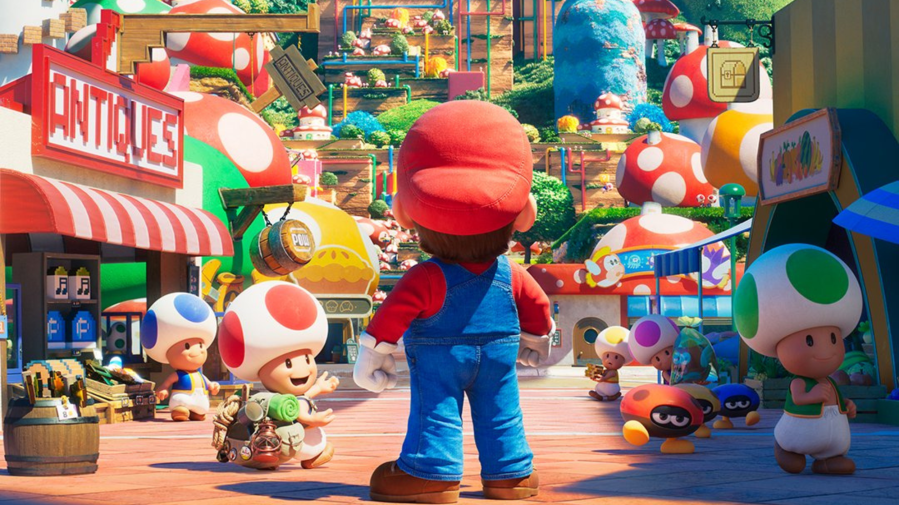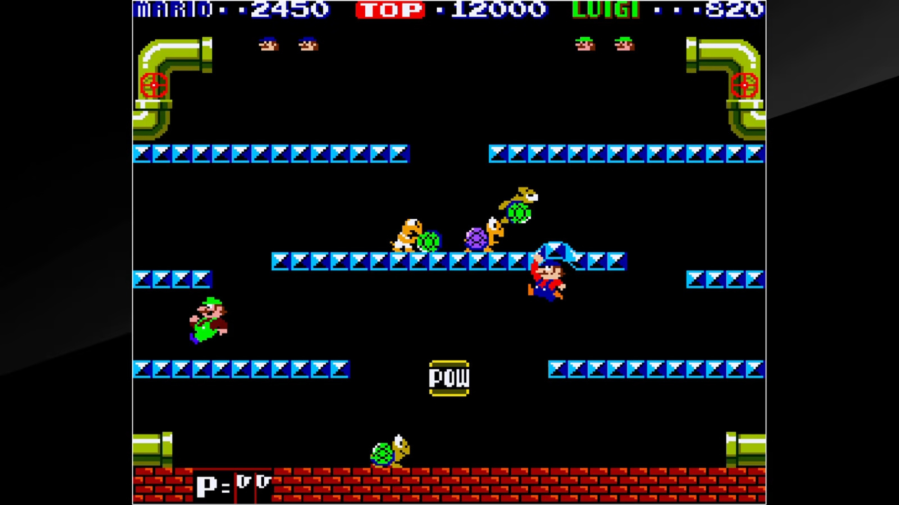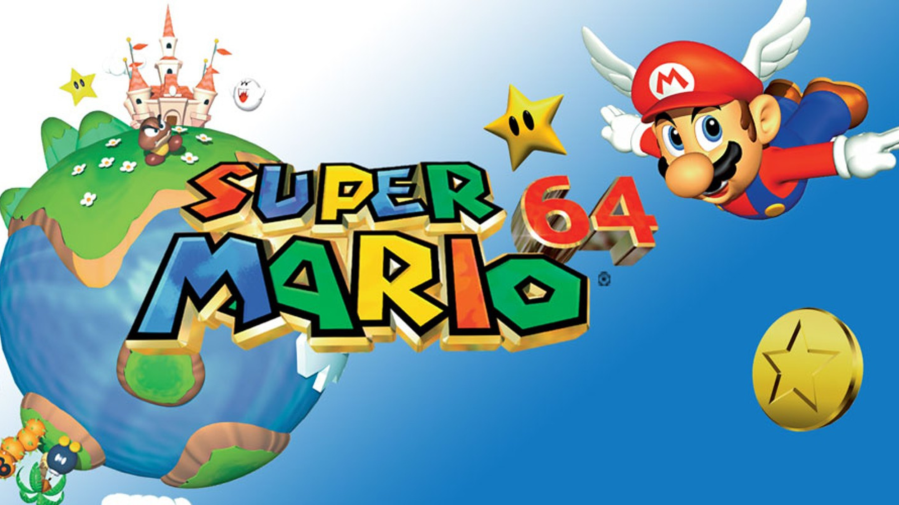
Super Mario has been a pop culture icon for over a decade, starring in countless video games and making cameos in the least likely of places (i.e. dunking on fools in NBA Street V3). He’s the face of the multimedia giant Nintendo, and made history (for worse or ill) when Super Mario Bros. (1993) hit theaters. The legendary Italian plumber has always been a mover the realm of pop culture, and he’s poised to do so again with a new Mario movie slated for release in 2023.
Details on the Jumpman’s latest feature-length foray were initial scarce, but we’ve gradually learned more overtime. Illumination (the folks behind the Despicable Me and Sing films) will produce the new Mario movie, which looks to be 100% computer generated. Aaron Horvath and Michael Jelenic, the minds behind Teen Titans Go!, will direct this project, while Shigeru Miyamoto (Mario’s creator) will guide the project as a producer.
Lastly, there’s the contentious element of this project’s cast. Charles Martinet, the man who’s voiced Mario since 1992, will have a cameo in this new film, but he won’t voice the Italian plumber — Chris Pratt will. Talents like Charlie Day, Anya-Taylor Joy, Jack Black, and Keegan-Michael Key fill out the rest of the cast, which means that we can expect a very dialogue-heavy interpretation of the Mario mythos. The film’s slated for an April 7, 2023 release date and the first trailer will premiere during the 10.6.2022 Nintendo Direct at 1:05 PST.
Let’s celebrate Mario’s storied past as well as his ever-exciting future by delving into his origins.
“Donkey Kong” Launches Mario’s Long-Running Career in 1981
Designed and directed by video game visionary Shigeru Miyamoto (Mario Bros., The Legend of Zelda), Donkey Kong was Nintendo’s answer to Namco’s incredibly popular Pac-Man (1980). In the platformer, gamers maneuver Mario around construction-site obstacles, all with the aim of rescuing Pauline — a forerunner to Princess Peach — from the clutches of Donkey Kong, a giant, barrel-throwing gorilla.

Of course, gamers might recall that Mario wasn’t actually called Mario back in 1981: at the time, he was referred to as “Jumpman.” Later, the company dubbed him Mario, reportedly a reference to Nintendo of America’s Italian American landlord, Mario Segale. Additionally, this so-called “everyman” character wasn’t a plumber in his first outing, but a carpenter.
Notable for introducing several of Nintendo’s key characters, Donkey Kong is also a huge moment in gaming history for several other reasons. Not only was it one of the very first platformers, but it was also the first platform game to feature jumping — something that would become integral to the genre.
Much like Pac-Man, Donkey Kong relied on cutscenes to help advance the game’s sparse plot. And maybe, just maybe, that’s partially why these characters resonated a bit more with gamers. After all, Nintendo has always blended innovation with solid gameplay, memorable characters and immersive worlds. Donkey Kong is an early example of the company’s — and, in particular, Miyamoto’s — successful formula.
“Mario Bros.” (1983) Marks One of the Plumber’s First Self-Titled Outings
Even if you’re a more casual gamer, odds are you’ve played Super Mario Bros. at some point. The 1985 hit cemented Mario’s place as the face of Nintendo and, to a larger extent, one of the industry’s biggest icons. But before that ubiquitous classic came onto the scene, Mario also starred in a few other self-titled games: Mario’s Cement Factory and Mario Bros., both of which debuted in 1983.
First up, Mario’s Cement Factory. Certainly the lesser-known of the two games, Cement Factory was released on Nintendo’s Game & Watch and developed by by Nintendo R&D1 under Gunpei Yokoi, who produced and co-designed Donkey Kong alongside Miyamoto. In the game, players control Mario, helping him navigate a cement factory’s elevators and funnels and save his co-workers from certain doom. While it’s certainly one of the stranger entries in the Mario franchise, Cement Factory was deserves its due for helping the Jumpman find his footing.

Of course, the more direct forerunner to Super Mario Bros. was the original Mario Bros., pictured here. Designed by both Miyamoto and Yokoi, Mario Bros. starred plumbers Mario and Luigi, the former’s brother, as they work to exterminate the creatures emerging from New York City’s sewers. This Donkey Kong spin-off certainly established many of the series most fundamental elements, but, unlike future games, players aren’t able to squash enemies by jumping on them. Instead, they have to flip enemies onto their backs and boot them off screen.
Released in arcades and for the Nintendo Entertainment System (NES; or Famicom), Mario Bros. came onto the scene during the video game crash of 1983, but, thanks to its memorable look and feel, it stood out — and, without a doubt, marked the real beginnings of the series we all know and love.
“Super Mario Bros.” Changes the Game in 1985
As we mentioned, when many of us think of an old-school Mario game, Super Mario Bros. is what comes to mind. A successor to Mario Bros., Super Mario Bros. was released in 1985 in Japan for Nintendo’s Famicom and, later, got a limited release stateside on the NES. (A few years later, it would receive a wider release outside of Japan.) Designed by Miyamoto and Takashi Tezuka, the game was dubbed a “grand culmination” of the team’s tireless work.
In essence, it was the best of all things game design — and not just on a programming level. For example, the game’s soundtrack, which was composed by Koji Kondo (of The Legend of Zelda series), was a centerpiece of the game. In addition to making side-scrollers all the more popular, Super Mario Bros. helped revive the entire industry and, with 50 million copies sold worldwide, it is one of the best-selling and best-reviewed video games of all time.
In the game, players control Mario (or Luigi) as he searches the Mushroom Kingdom, eager to save Princess Toadstool (later, Princess Peach) from King Koopa (later, Bowser). The game not only introduced iconic enemies, from Goombas and Bullet Bills to Bowser himself, but it also served as the debut for a number of power-up items, including Super Mushrooms, Fire Flowers and Starman (colloquially dubbed “Star Power”).

Of course, Mario’s mid-to-late-80s success wasn’t contained to just one game. In 1984, Mario was added to plenty of other Nintendo titles, including Tennis, in which Mario was the referee, as well as Pinball, Golf, and Tetris, among many other Nintendo releases. This was not just a testament to how well-loved the character was, but it also marked a smart move on Nintendo’s part — the more gamers saw Mario, the more of a Mickey Mouse-level icon he’d become.
In 1989, Mario appeared in his own Game Boy game for the first time. Although Super Mario Land was slightly different when it came to gameplay, fans still craved anything starring the plumber. A year later, Nintendo introduced Super Mario Bros. 3, a title that’s often recognized as one of the franchise’s best installments — as well as one of the greatest video games of all time.
In fact, Super Mario Bros. 3 became the third-best-selling NES game with more than 17 million copies sold worldwide. The game introduced an overworld map and marked the first appearance of the beloved Tanooki Suit. Several years later, upon the release of the All-Stars edition of the game, Electronic Gaming Monthly ranked it second only to Tetris, writing that Super Mario Bros. 3 “took the series back to its roots, but expanded upon the original game in every way imaginable. No other game since has been able to recapture the spirit of adventure and enchantment found [here].”
In the ’90s, Mario Broadens His Pursuits
The early ’90s were the heyday of the Super Nintendo Entertainment System (SNES). In 1991, Super Mario World saw the titular character facing off against Bowser and his Koopa army yet again — though, this time, it introduced Mario’s lovable, green dino-pal Yoshi.
Of course, Nintendo didn’t want to box Mario in. Or, perhaps more accurately, they wanted him everywhere. For example, players got the chance to see Mario switching up his profession in the puzzle game Dr. Mario (1990). In 1992, Mario sat behind the wheel for the first time in the one-and-only Super Mario Kart — a game that would give birth to a long-running franchise (and phenomenon) in its own right. And, in 1996, Mario dipped his toes into the role-playing game (RPG) genre thanks to Super Mario RPG: Legend of the Seven Stars, a joint effort between Nintendo and Square (now, Square Enix), the company behind beloved RPG series like Final Fantasy and Kingdom Hearts.

In the late ’90s, the Nintendo 64 (N64) took Mario’s adventures to new heights. Super Mario 64 (1996) marked the first “3D” Mario game; the open-world game allowed players to roam around a world composed mainly of 3D polygons instead of 2D sprites. The effect? You really felt immersed in the various worlds of the game — and it brought the story and characters to life like never before.
The N64, which offered up four controller ports, certainly emphasized multi-player and party games. With an eye toward social gaming experiences, Nintendo released classics like Mario Kart 64 (1996) and launched several enduring (and beloved) series, including Mario Party, Super Smash Bros., Mario Tennis and Mario Golf, just to name a few. Toward the end of the N64’s cycle as the must-have console, Nintendo released Paper Mario (2000), an innovative title that starred a paper cut-out of Mario and mixed RPG, action-adventure and puzzling elements.
Mario Remains a Superstar Today
Over the next few years, Nintendo would go on to release ever-innovative mainstays in the Mario franchise, from GameCube’s odd-yet-creative Super Mario Sunshine (2002) and Luigi’s Mansion (2001) to the Wii’s gravity-defying Super Mario Galaxy (2007) and incredibly chaotic (yet fun) New Super Mario Bros. Wii (2009) to the latest and greatest versions of Mario Kart, Super Smash, Mario Party, Paper Mario, and Mario [Insert Virtually Any Sport Here]. The WiiU’s Super Mario Maker (2015) even allowed players to create their own side-scrolling adventures.

More recently, the Switch’s Super Mario Odyssey (2017) gave players a chance to embark on an open-world, truly open-ended Mario adventure. As of June 2022, Odyssey sold over 23.93 million copies, proving that continued innovation and a familiar, red-capped hero can go a long way when it comes to appealing to gamers, even after four decades of fun. Mario sure has come a long way from his origins as Donkey Kong‘s Jumpman — and we can’t wait to see where his adventures bring us next.






